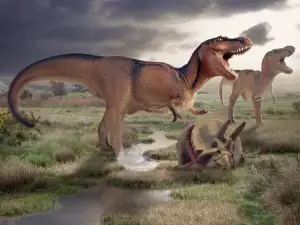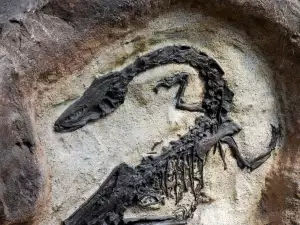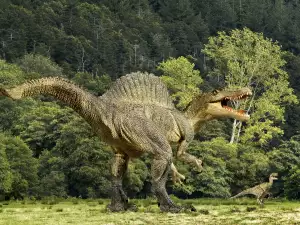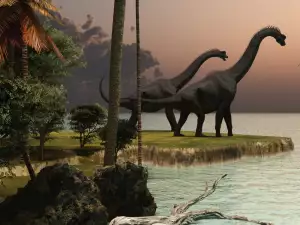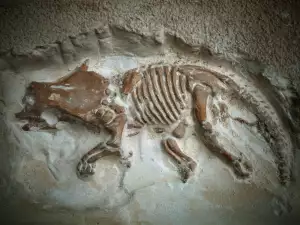On an island in the remote Arctic archipelago of Svalbard laid the remains of a giant meat eating sea monster, it was known to have patrolled the oceans during the reign of the fabulous dinosaurs.
It was described as the most significant Jurassic discoveries ever made. The Norwegian fossil hunters firstly recovered the rear half of the reptiles skull south west of Spitsbergen. It was identified as a new species know as pliosaur.
The pliosaur was described as a group of extinct aquatic reptiles that had huge skulls, short necks and four flippers to aid them with swimming. The evidence of the findings allowed us to tell that the this magnificent creature was in fact on top of the food chain, measurements of the partial skull and 20, 000 other bone fragments teaches us this was really the biggest aquatic dinosaur known to man. This creature would pray on marine animals including squid and fish, writes Guardian.co.uk.
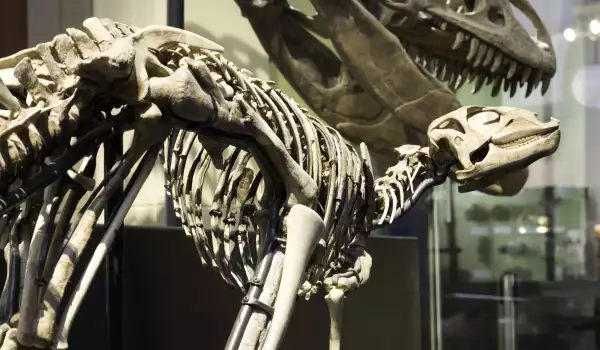
We know the Tyrannosaurus Rex as the most chilling and largest of all dinosaurs, however the pliosaur's head was double the size of the Tyrannosaurus. A quick fact of this chilling land dinosaur is that the Tyrannosaurus had an impressive set of 12 inch teeth. It was estimated by paleontologists however pliosaur beast was 15 meters long weighed in at 45 tones and hunted the oceans 147 million years ago.
This is really big. We have parts of the lower jaw that are huge compared with anything we've ever seen, " said Espen Madsen Knutsen, a paleontologist on the team at the University of Oslo that studied the creature. "It could have eaten anything it came across."
It was not until the day of the expedition in 2007 that researchers go their first glance I the remains, in this time they also revealed a smaller pliosaur too. They returned last August to excavate the remains as they took a GPS reading of the location since Jorn Hurum at the University of Oslo's Natural History Museum noticed some large bones sticking out of the ground, it was he that led the fascinating expedition. What Hurums team discovered was rather satisfying and astonishing, they uncovered for the first time ever recorded to date an even larger pliosaur. They are now trying to build a picture of what it would had looked time in its time of inhibition, to do this they are studying the remains and as they clean their way through they are measuring every exact fragment to ensure accuracy of these magnificent findings. Among the remains, the team noticed a spherical bone, called a basioccipital condyle, found in all mammals and reptiles that joins the base of the skull to the spinal cord. The bone measured 15cm across, making it the largest of any pliosaur known, and twice the size of the same bone in T. rex. Frank Fish, an expert on the bio mechanics of flippers, at west Chester University in Pennsylvania was called in to find out how this beast moved through water. They discovered the beast swam through the ocean using its front two flippers only, deploying all four to lunge forwards and take its prey by surprise, this was known by using a wind tunnel, they reconstructed forces that the creatures Hugh flippers generated. Patrick Druckenmiller from the University if Alaska borrowed a computed tomography from the Natural History Museum in London, from here he created three dimensional images of the brain. Evidence has it that this creature had a small elongated brain similar to that of the great white shark.
Later the same team traveled to join evolutionary biologist Greg Erickson in Florida's St Augustine Alligator Farm and Zoological Park. Greg Erickson came from Florida's state University to work out how powerful the beats bite was. Calculations based on the animal's jaw bones suggest it could have bitten into its prey with a force of 150 kilo newtons, or four times the force thought to be exerted by the jaws of a T. Rex. The discovery was announced as Canadian experts unveiled their own remarkable finding, the fossilized remains of what may have been the least fearsome predator ever to stalk the continent.
The findings was that of the smallest ever carnivorous dinosaur to record. Located in what is now North America it appeared to replicate a small skinny chicken, running about on two legs wielding razor sharp claws. On the second toe it had a larger shaped sharp claw.
The discovery was announced as Canadian experts unveiled their own remarkable finding, the fossilized remains of what may have been the least fearsome predator ever to stalk the continent.
In Alberta during the year of 1982 the remains of the diminutive dinosaur was excavated, the name of this dinosaur was Hesperonychus. He Dinosaur Park foundation where this process took place is 75 million years on it was laid for 25years unstudied. Source: Guardian News and Media.



